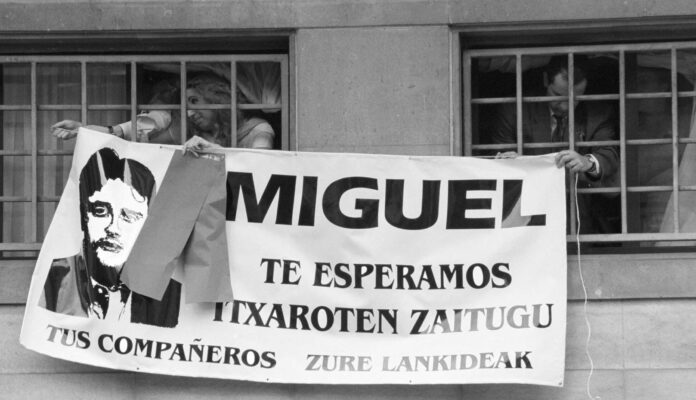The Civil Guard has presented a macro-report to the National High Court on the responsibility of the ETA leadership in the kidnapping and murder of Miguel Ángel Blanco 25 years ago.
The report, which could become a key piece to achieve the conviction of several heads of the terrorist organization, concludes that the action of the Donosti commando could only take place by decision of the Zuba (executive committee of the gang) and that while the kidnapping lasted their components had in their hands the possibility of deactivating it.
The document, of 200 pages plus several hundred annexes, responds to the request of magistrate Manuel García Castellón, who reactivated the case after the presentation of a complaint by Dignity and Justice against those who in 1997 were in the leadership of ETA: José Javier Arizcuren, Kantauri; Mikel Albisu, Mikel Antza; Ignacio Gracia Arregui, Iñaki de Rentería; and María Soledad Iparraguirre, Anboto.
“A terrorist action of relevance to ETA, such as the kidnapping and subsequent murder of Mr. Blanco Garrido, could not have been carried out without the knowledge, planning, order and express authorization of its leadership structure, of its Executive Committee”, affirm the authors of the report.
After exposing the marked hierarchical nature of the organization, the document adds that the kidnapping and murder “was the result of a mechanical process that took place within the terrorist organization and that required prior information, a decision by the competent governing body and materialization or final execution of it”.
The letter explains that in 1997 the Executive Committee of ETA decided to carry out terrorist actions against members of the PP through a new procedure: kidnapping under threat of assassination if the Spanish government did not agree to ETA’s demands. The order was transferred to the commandos, who could not execute it because their members were arrested. “With one exception,” the investigators explain, that of the Donosti commando, which was not located and was able to kidnap Blanco.
“Only the Executive Committee of ETA had the capacity to make a decision such as the kidnapping and murder of the councilor of the Popular Party in Ermua, of very important importance and social and media impact,” the report insists.
In his request to the Armed Institute, the judge in the case specifically asked to be informed if the members of Zuba had it in their power to have desisted from the kidnapping. The reason for that question is that it was the key so that another terrorist leader -in this case Comrade Arenas, from Grapo- was convicted of a kidnapping that he had not carried out nor was there direct evidence that he ordered it -that of Publio Cordón -.
The answer in the report is affirmative: “The assassination of Mr. Miguel Ángel Blanco Garrido in July 1997 by members of ETA’s Donosti commando could have been prevented by the leaders of the terrorist organization who at that time had control and direction of the activity of the aforementioned command, simply by having given directly or indirectly through a link, a clear and specific order to its members to release the Popular Party councilor who had been kidnapped”.
The murder of Blanco is one of the various cases opened in the Hearing on the possible responsibility of the ETA leaders in the attacks committed by the commandos. The jurisprudence has been very strict when it comes to considering the leaders of the gang as perpetrators of the attacks. There is hardly any precedent for this if there is also no element linking the leader to the specific attack. Comrade Arenas’ precedent opens the door to convictions for the murder of Miguel Ángel Blanco.
Conforms to The Trust Project criteria








